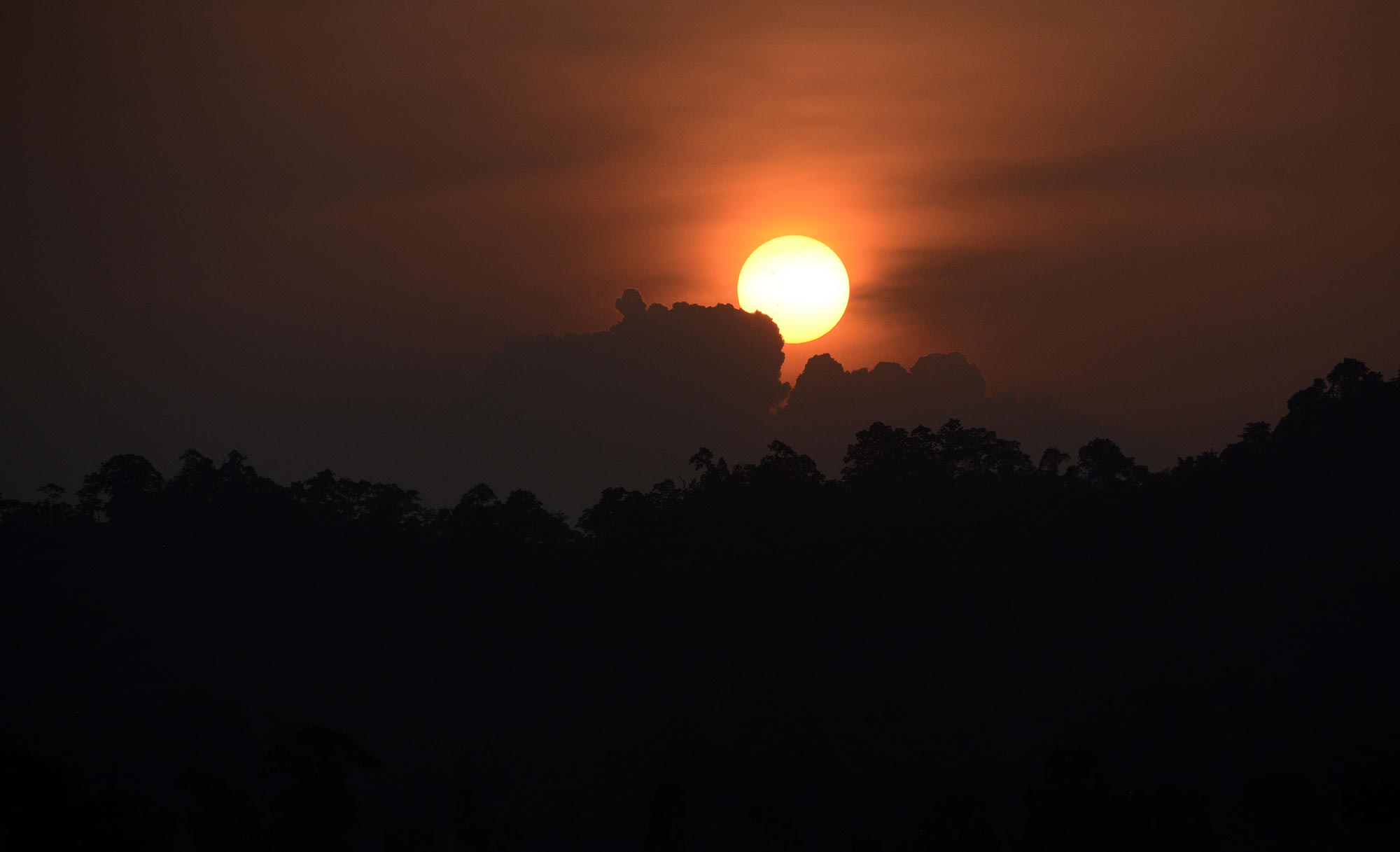
Refugees: People who were forced to flee their country because of persecution, war, or violence. Most likely, they
cannot return home or are afraid to do so.
More than 20 years ago, the Lhotshompa people fled ethnic conflict in Bhutan and settled in refugee camps in Nepal. Now the camps are closing and refugees are being resettled in countries around the world. Most have moved to the United States, many to the Pittsburgh area.
More than 20 years ago, the Lhotshompa people fled ethnic conflict in Bhutan and settled in refugee camps in Nepal. Now the camps are closing and refugees are being resettled in countries around the world. Most have moved to the United States, many to the Pittsburgh area.
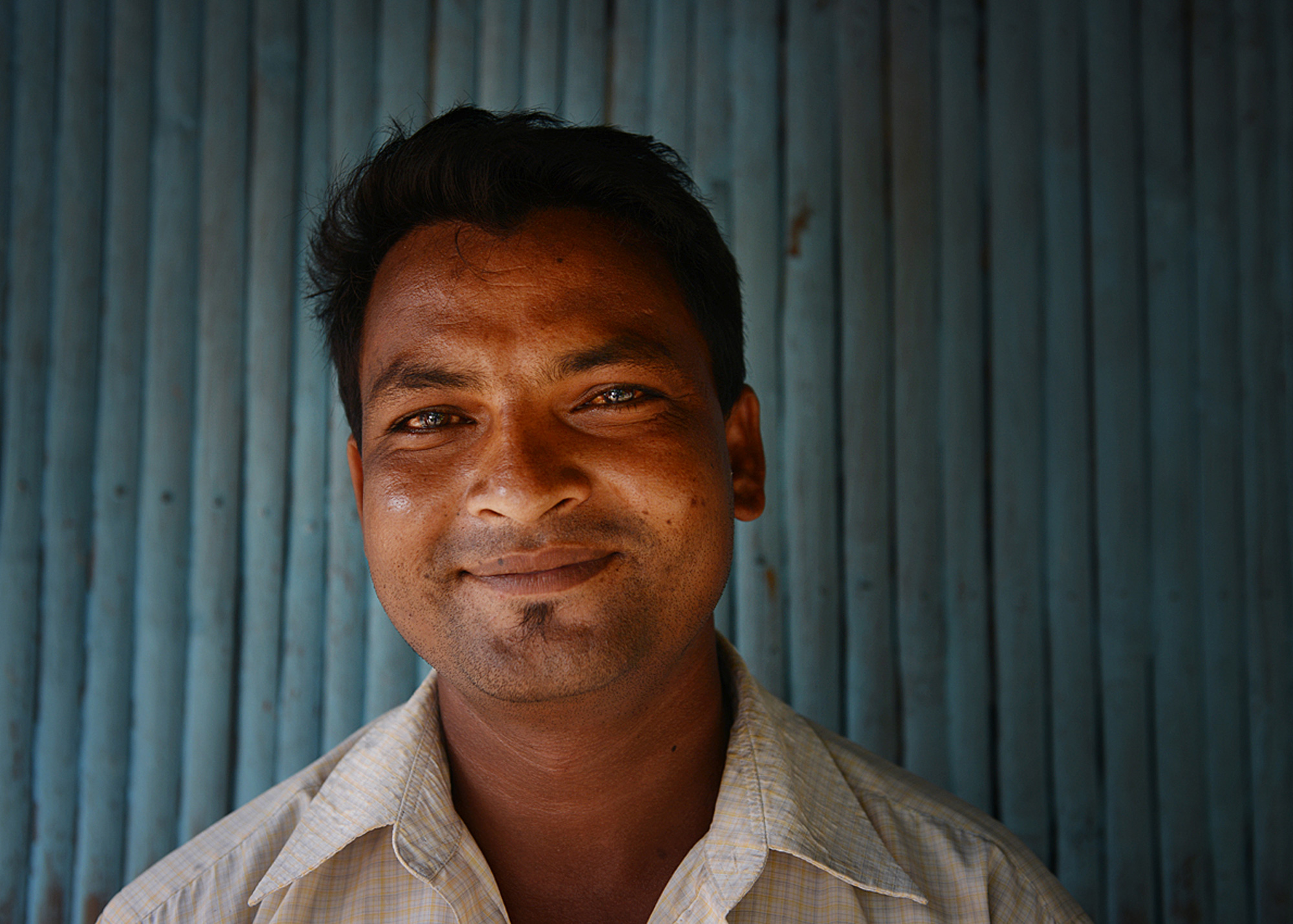
PEOPLE
Hira Darjee, 30, sits outside his hut in Beldangi, one of two remaining Bhutanese refugee camps in eastern Nepal. His family -- mother, father and two brothers -- already live in Pittsburgh. Hira and his wife, Momta, have applied for third-country resettlement and are waiting. Hira was 6 when he left Bhutan. Unlike the adults who remember it as a traumatic experience, he recalls his excitement when the big trucks came into his remote village to expel them. "I had never been in a truck before," he says.
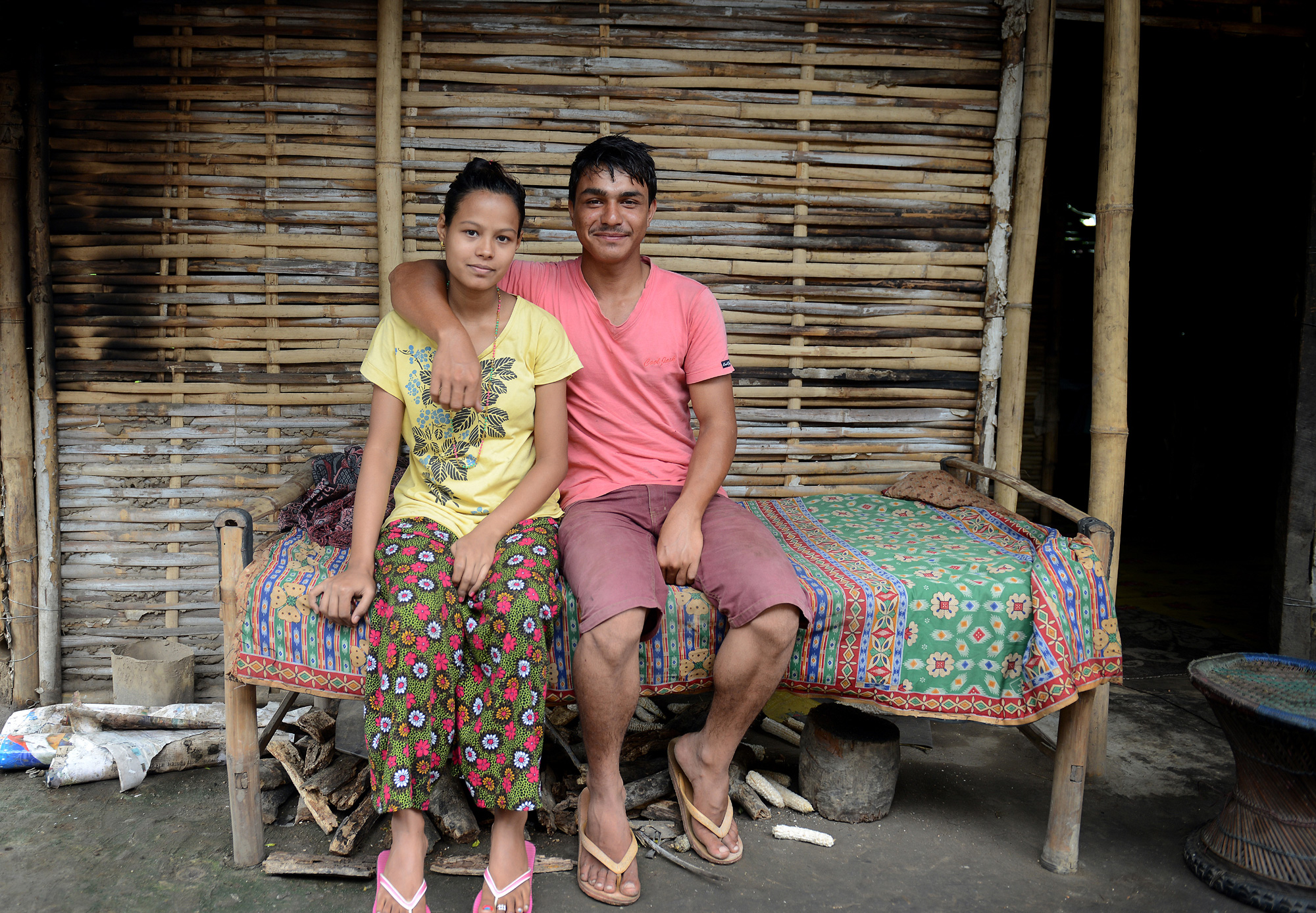
Chandra Khadka and his wife, Januki Bhattari, both 19, sit outside their hut on a hot day in early July. This young, expectant couple will arrive in Pittsburgh, likely before the year is out. "My mother told me to stay safe and come to the USA soon. I replied that it's not in my hands, so don't worry if I'm late," he says.
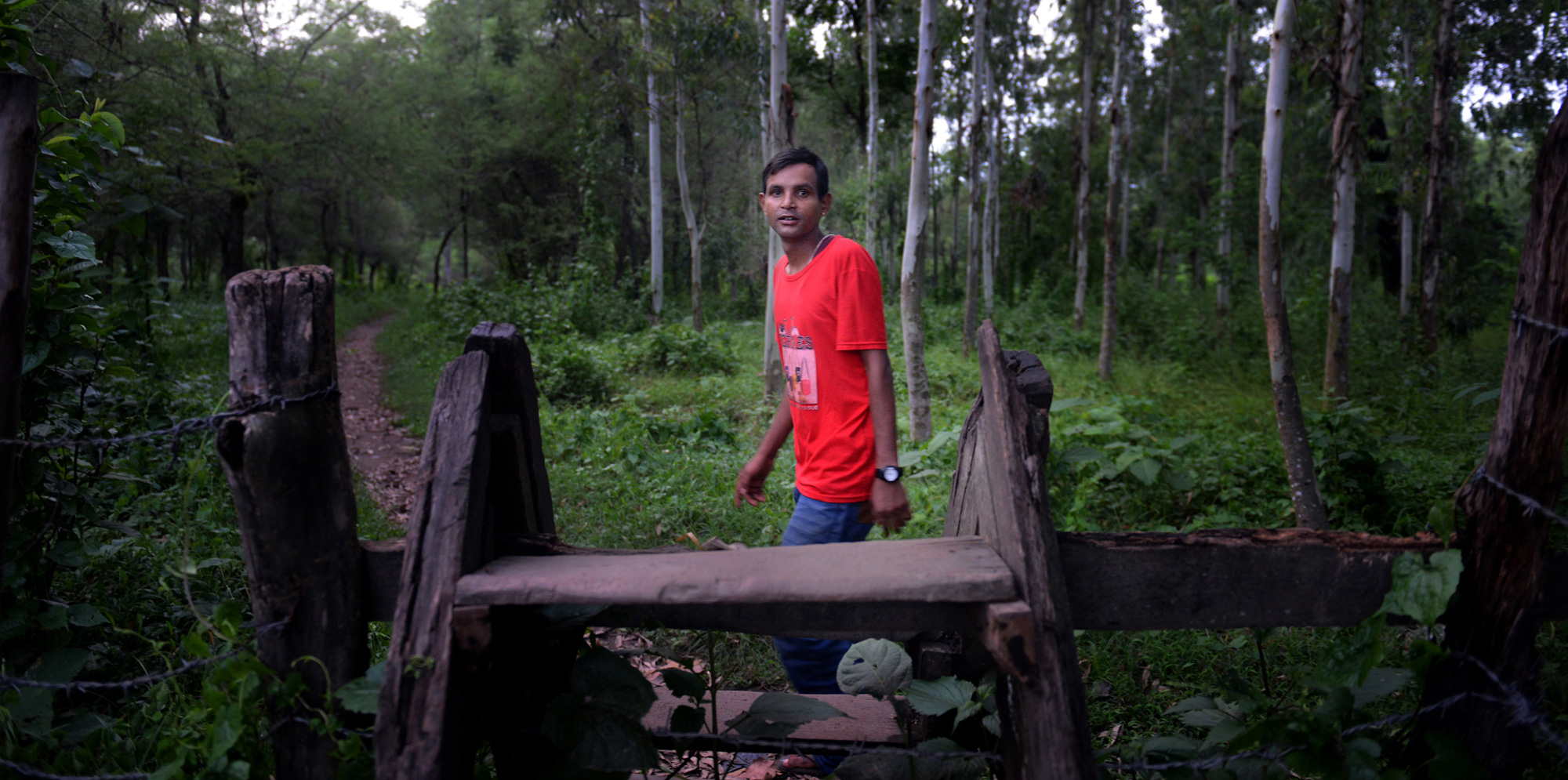
Ganga Ram Khanal, 28, had a date to leave the refugee camp and move to Erie in early 2010, but things fell apart. Ganga was addicted to alcohol, a common problem among young people in the camps who feel helpless in their immigration process and useless in their daily lives. Some of his family stayed behind to wait for him but now the guilt of having delayed their process weighs on him.

Family matriarch Bishnu Maya Poudel, 68, and members of her family found refuge in Pittsburgh on Aug. 3, 2011, after living in the refugee camps for nearly two decades. She lives with her son, Kul Poudel, and his young family in Carrick, but tears come to her eyes when she thinks of her daughter, Surja Maya. Surja remains in the camps, her process complicated by her son, Ganga Ram Khanal, who has struggled with alcoholism.
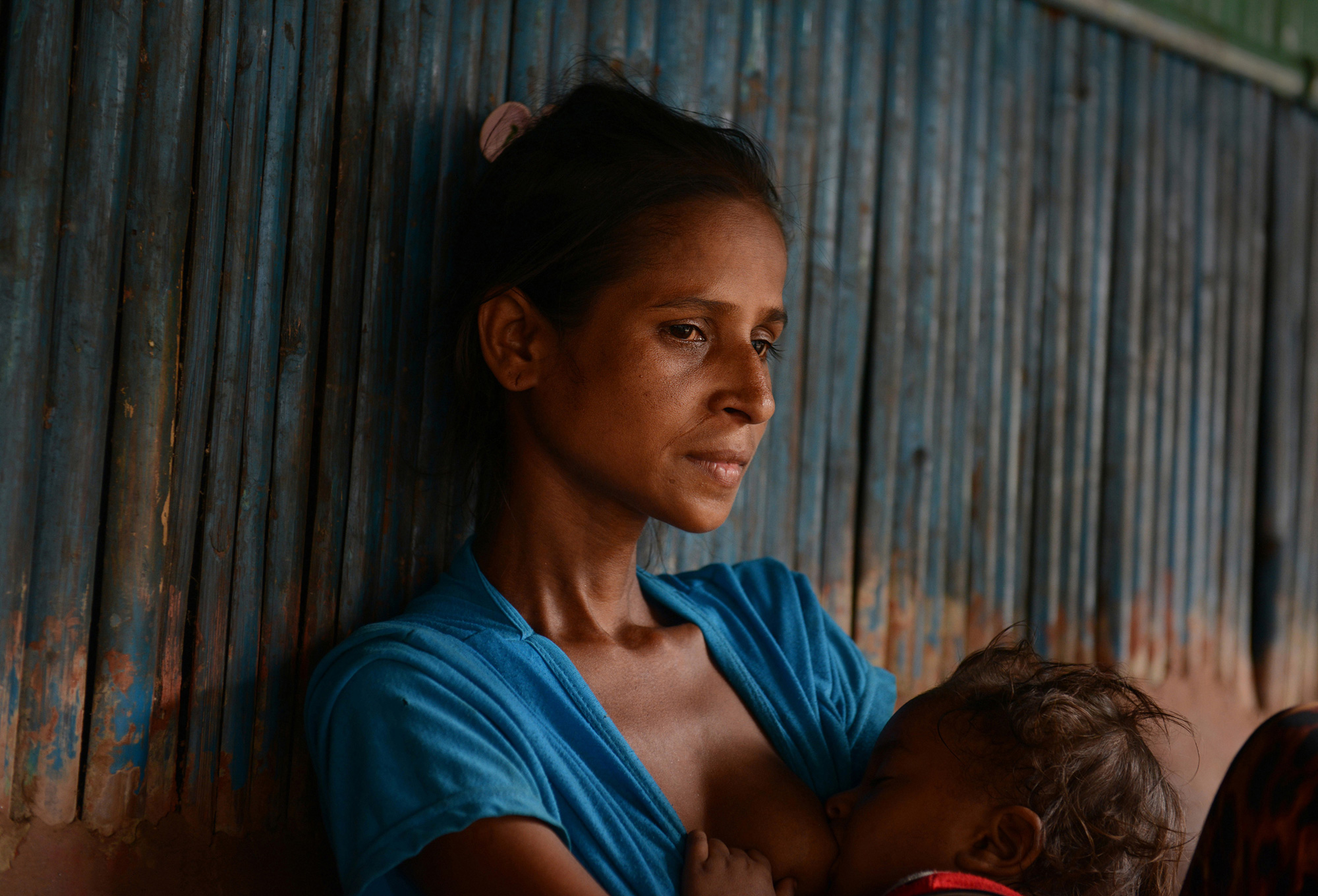
Hari Maya Baswa, 30, and her son Rojan, 1, sit outside her hut in early July. She recently applied for third-country resettlement after being counseled that the application period was closing for good on June 30. Her case is complicated by the fact that she is the second wife to an Indian man, whom she married at age 13. She admits her alcohol addiction has also affected her ability and motivation to leave.
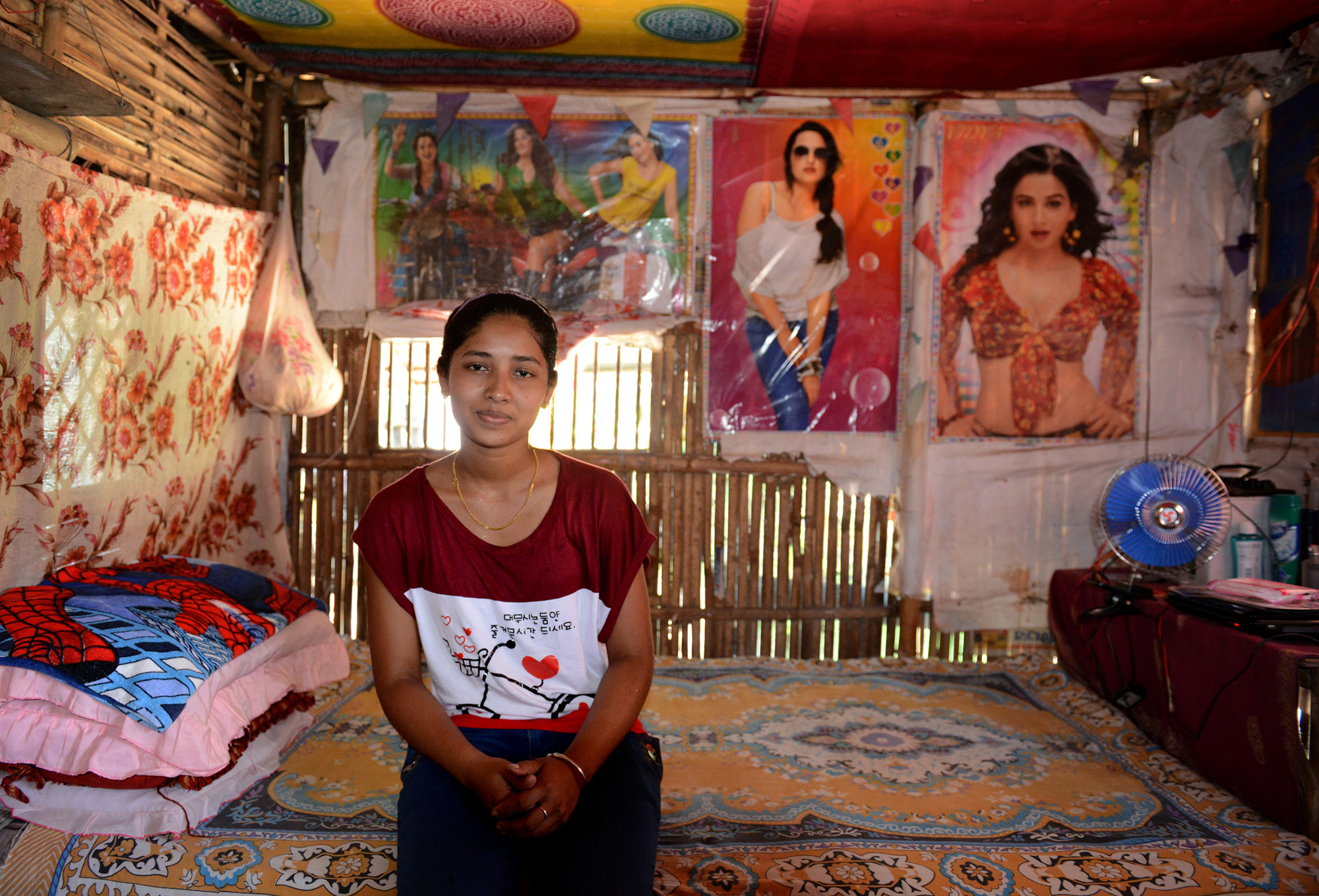
Kamala Biswa, 19, sits in her neighbor's home in Bildangi II, one of two remaining Bhutanese refugee camps in eastern Nepal, near the Indian border. Kamala, a shy girl, is immigrating to Akron, Ohio.
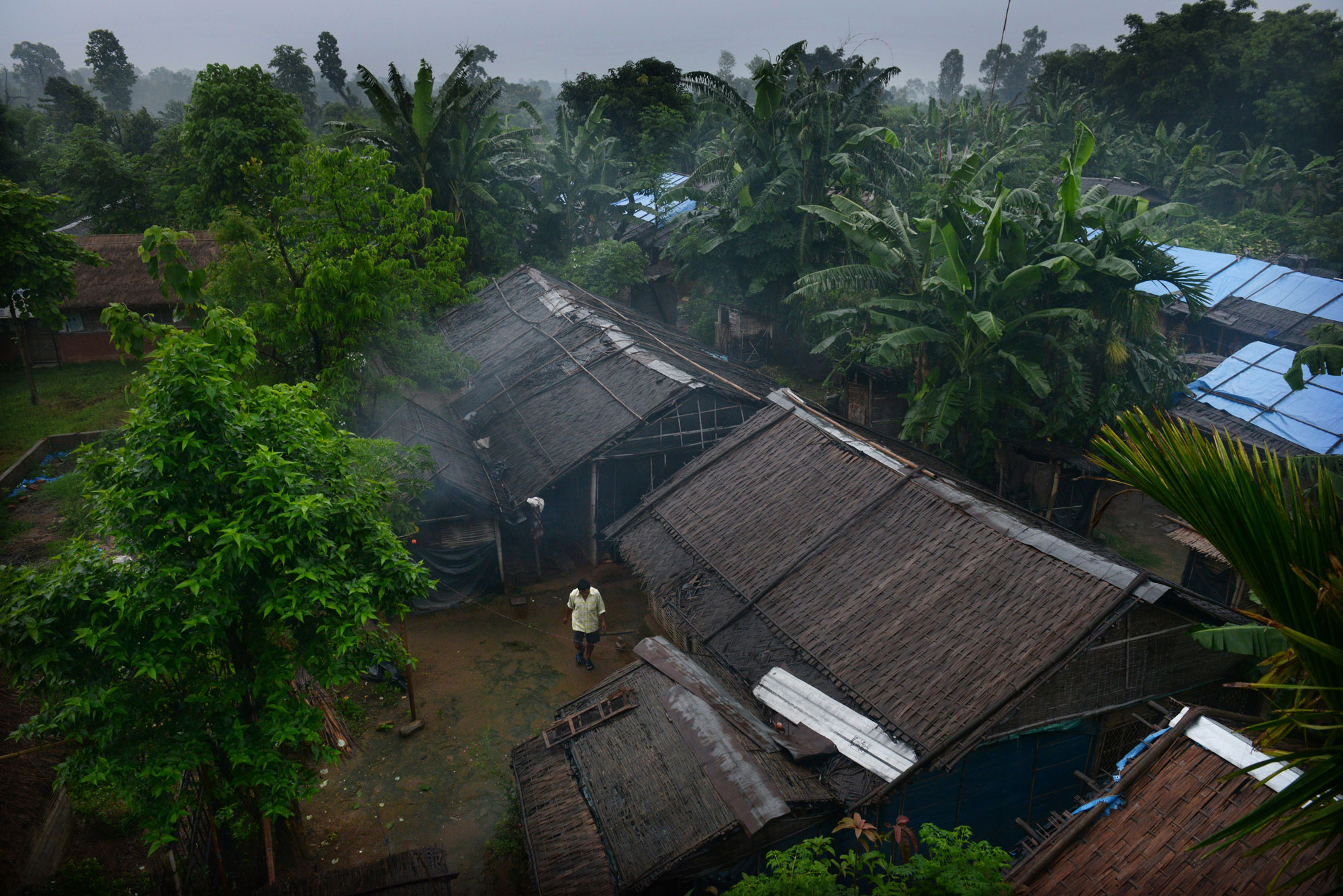
LIFE IN THE CAMPS
Day breaks over Sanischare, in eastern Nepal, in early July, when the punishing rains of Monsoon season batter the bamboo-and-thatch huts of the refugee camps. Nearly all of the 108,000 ethnic Nepalis who fled Bhutan two decades ago, but the two remaining camps in eastern Nepal are still home to 29,000 refugees who await relocation to the United States or one of seven other Western countries.
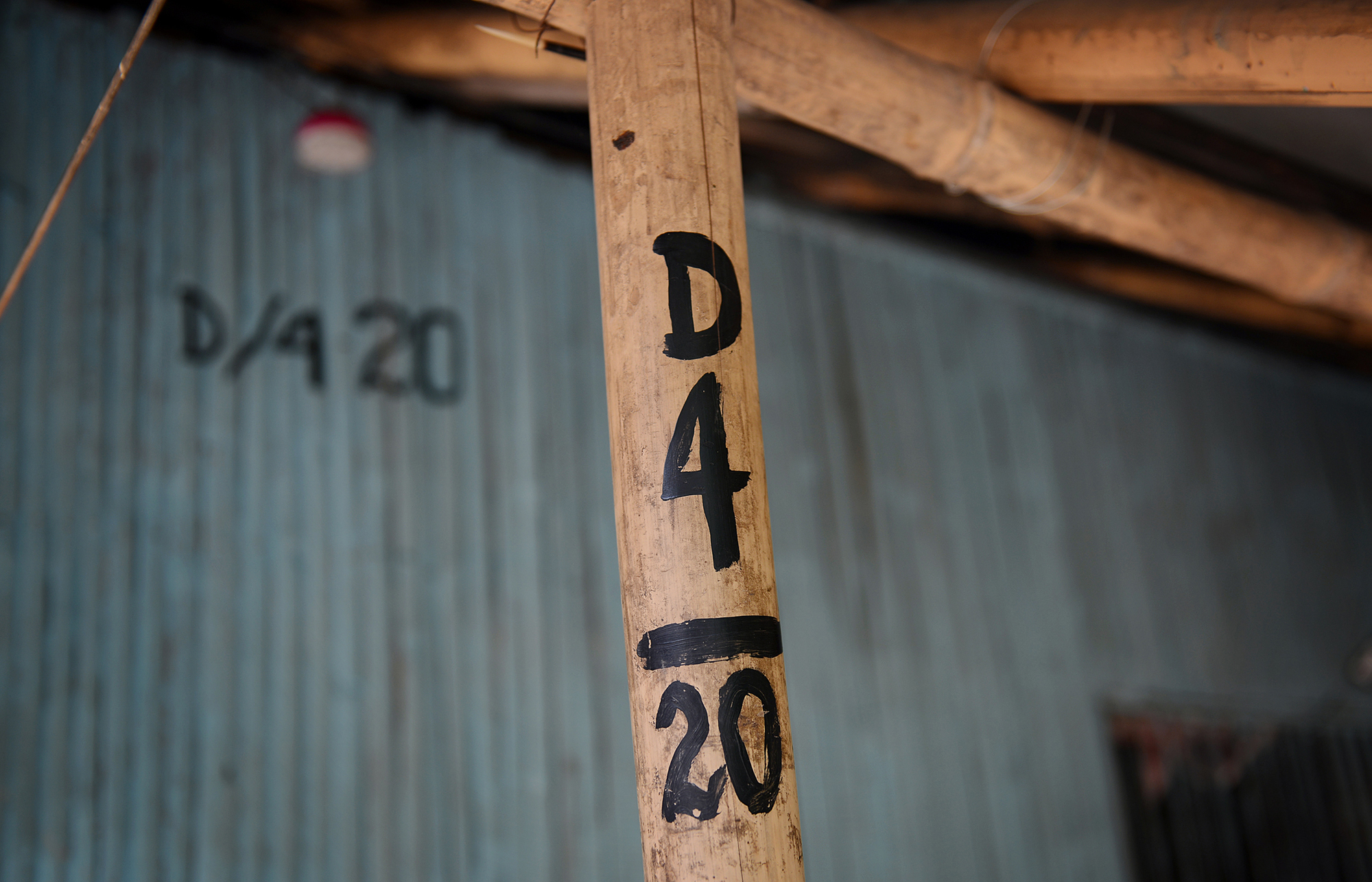
Huts in the refugee camps are marked with their location. This is the home of Hira and Momta Darjee - Sector D4, Hut 20. Once a week, the International Organization for Migration posts lists of hut numbers on bulletin boards around the Sanischare and Beldangi camps. They indicate which families have advanced one step closer to traveling to the Third Country. Refugees come by on bicycles or on foot, scanning the lists for their hut numbers.
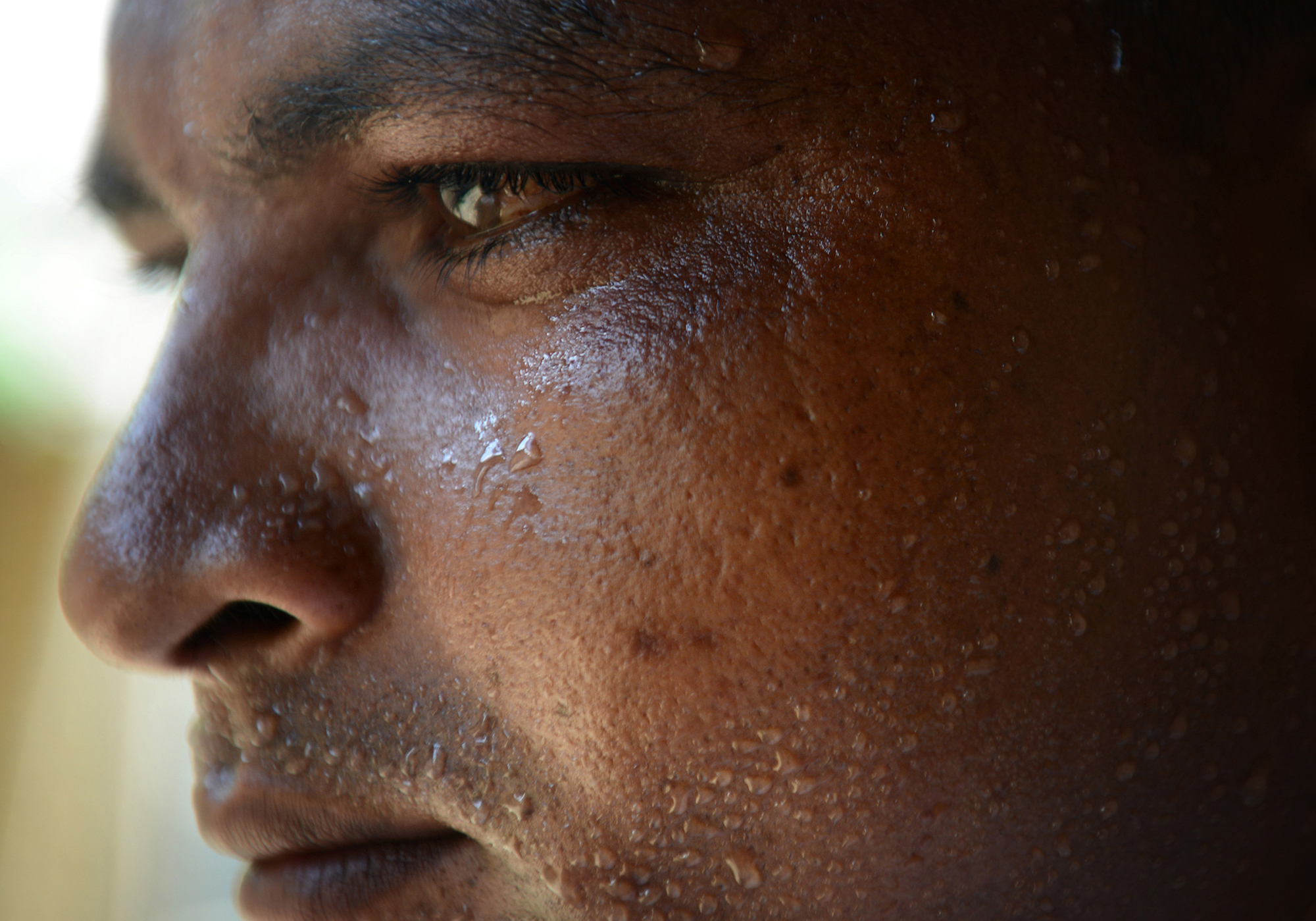
Hira Darjee, 30, on a day in early July when temperatures reached nearly 100 degrees. Most refugees do not have electricity; a few have solar-powered fans. Hira is frustrated by the immigration process but hopes he can come to Ohio or Western Pennsylvania soon. "I want to see how this snow falls," he says.
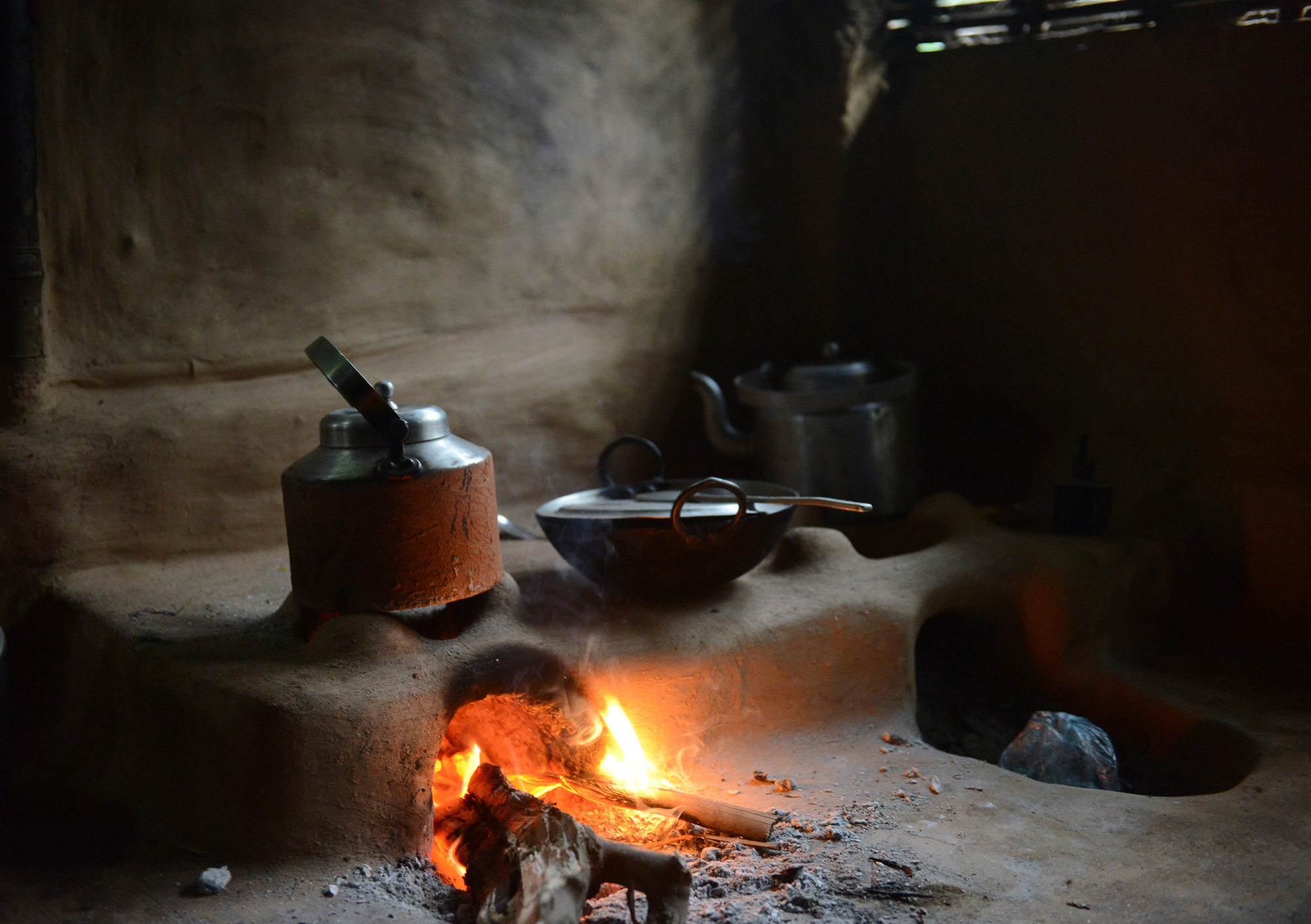
Refugees cook over mud ovens, usually built into the floors of the huts, with firewood that they collect.
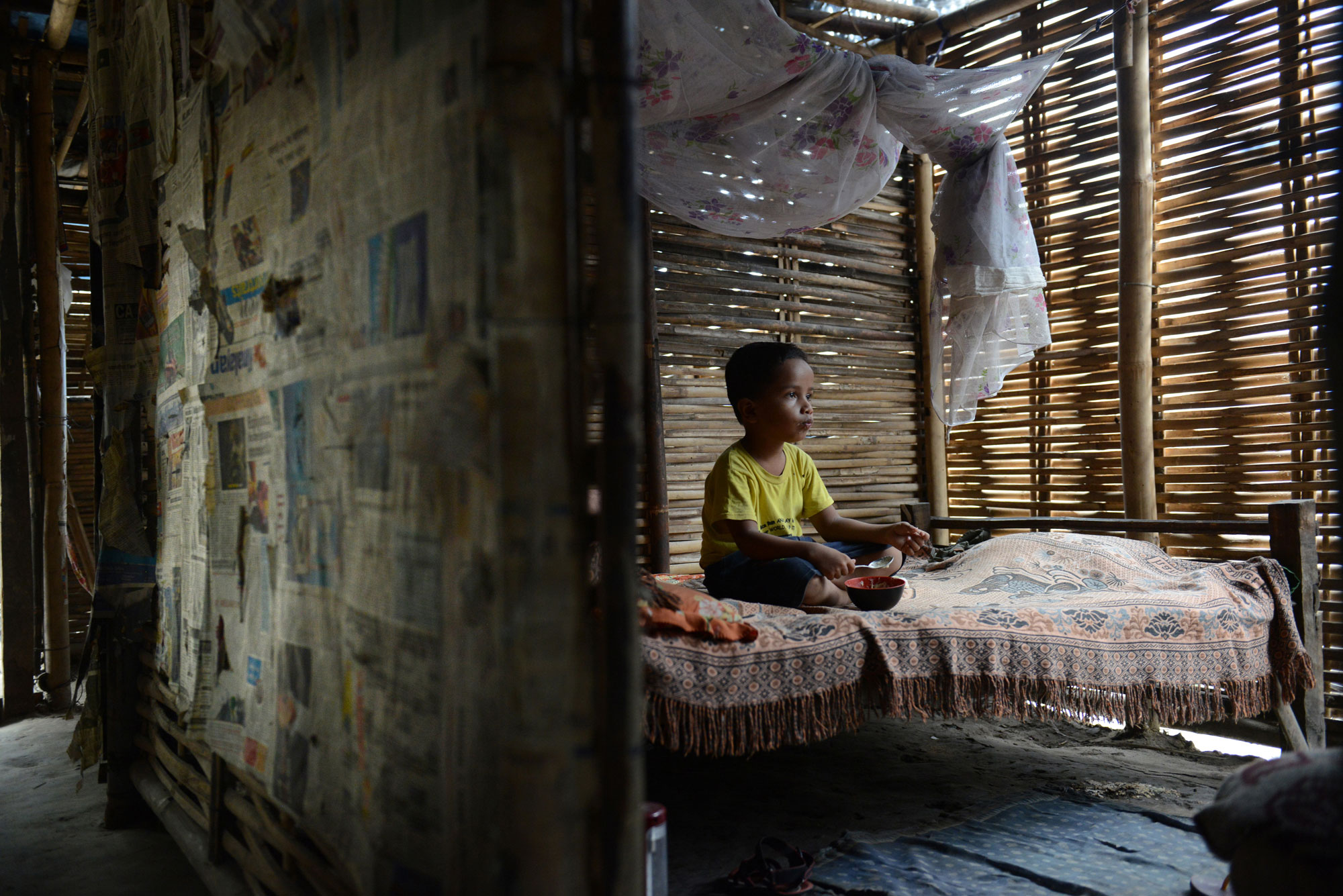
Prabesh Ray, 5, lives with his mother, Chandra Wati Siwakoti. They are waiting on her divorce proceedings to go to the Pittsburgh area. Prabesh shows promise at school in the camp, and Chandra is anxious for him to be in school in the United States. "My son's school here is not bad but due to third country resettlement, every month teachers keep changing," she says. "Due to discontinuity of teachers, students are facing a problem."
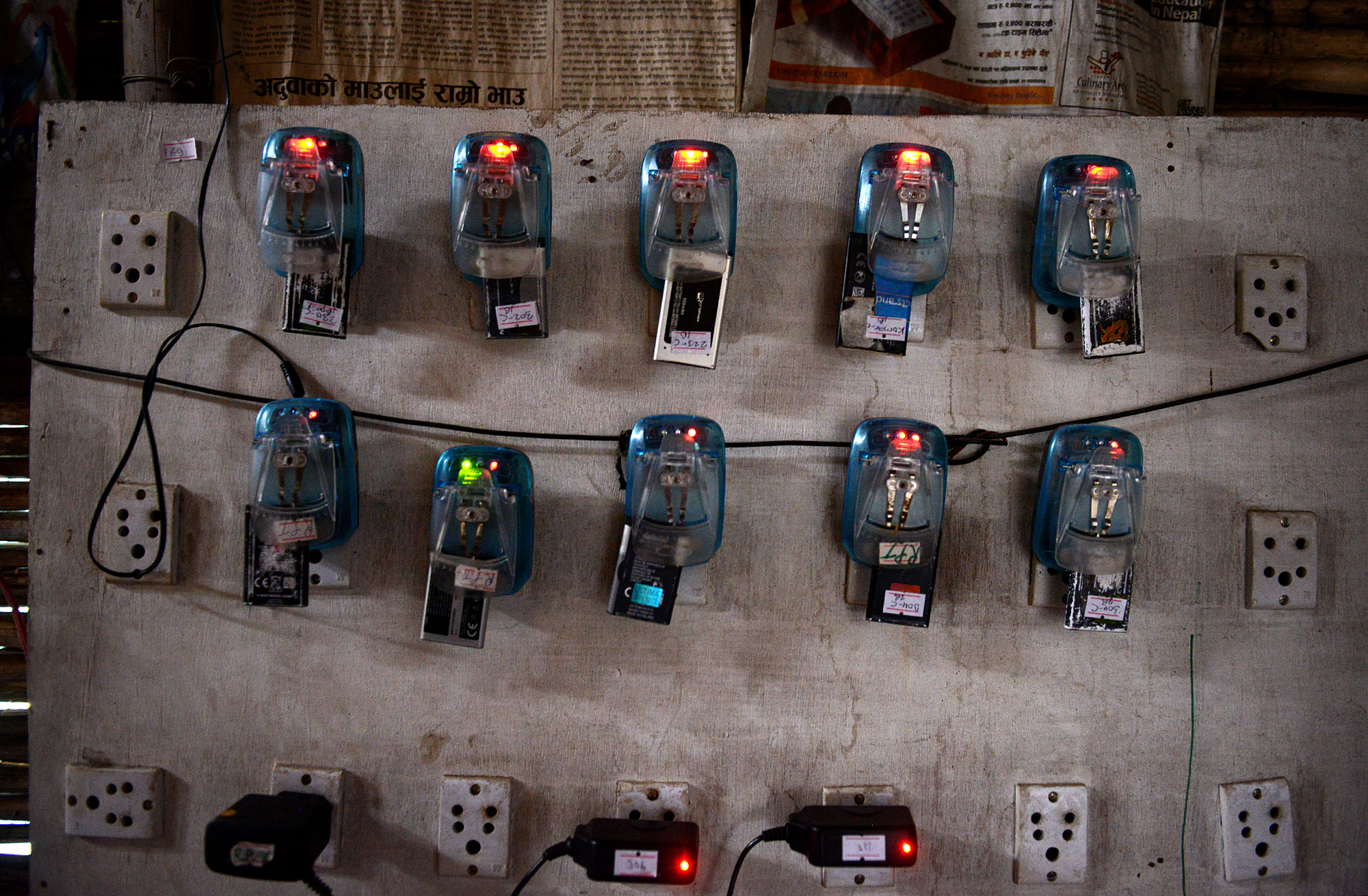
Cell phone charging stations do the job for refugees living without electricity. A few huts in the camps have small solar panels, which provide enough electricity to power a small fan to cut the sweltering heat.
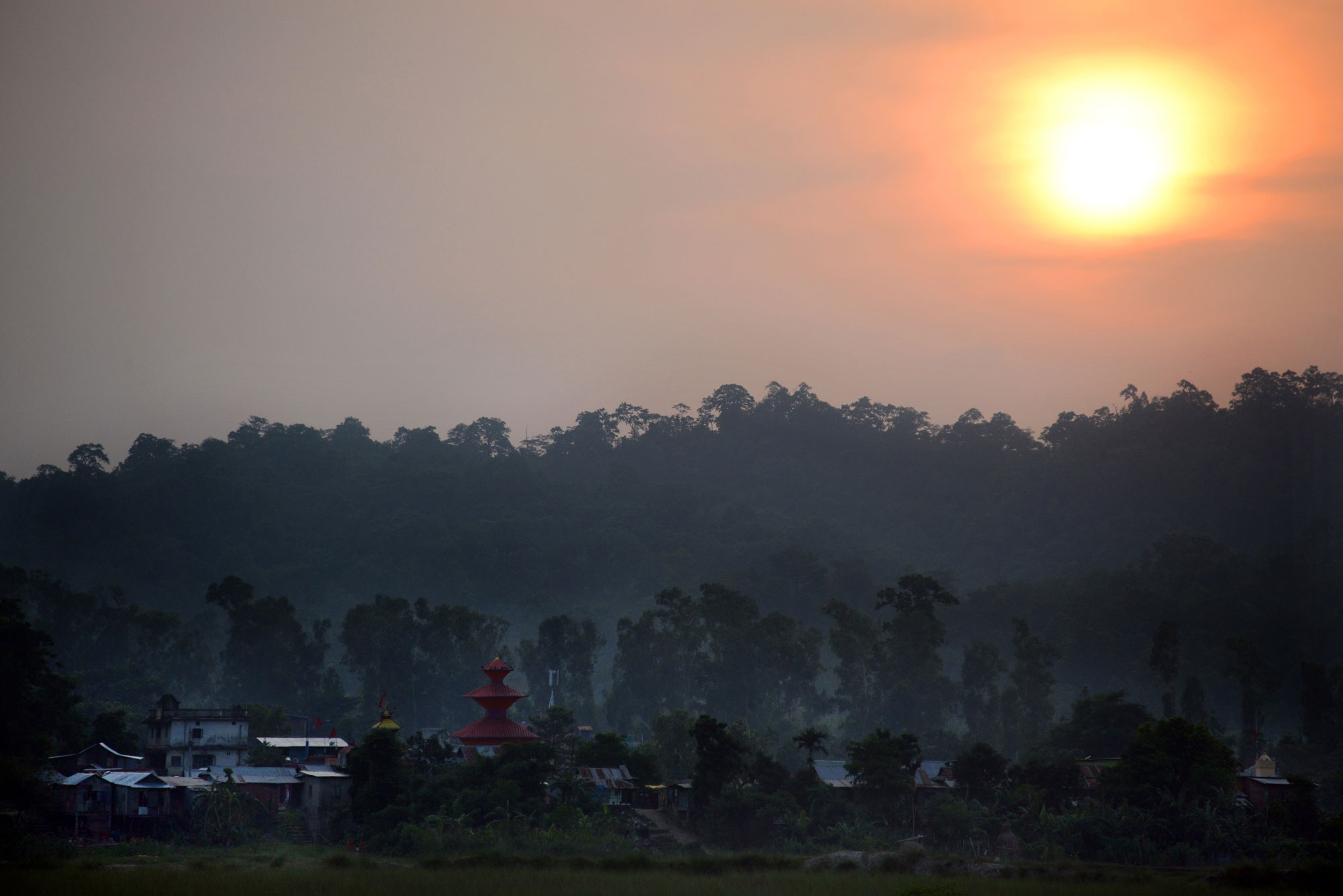
The sun sets over the Mai River in eastern Nepal on July 6. The banks of the river are where the Bhutanese refugees first settled in Nepal two decades ago. Some refugees who remember those early days of exile say the conditions at the river were unbearable. There was very little clean water and before the United Nations stepped in with provisions, several people died from disease and dehydration.
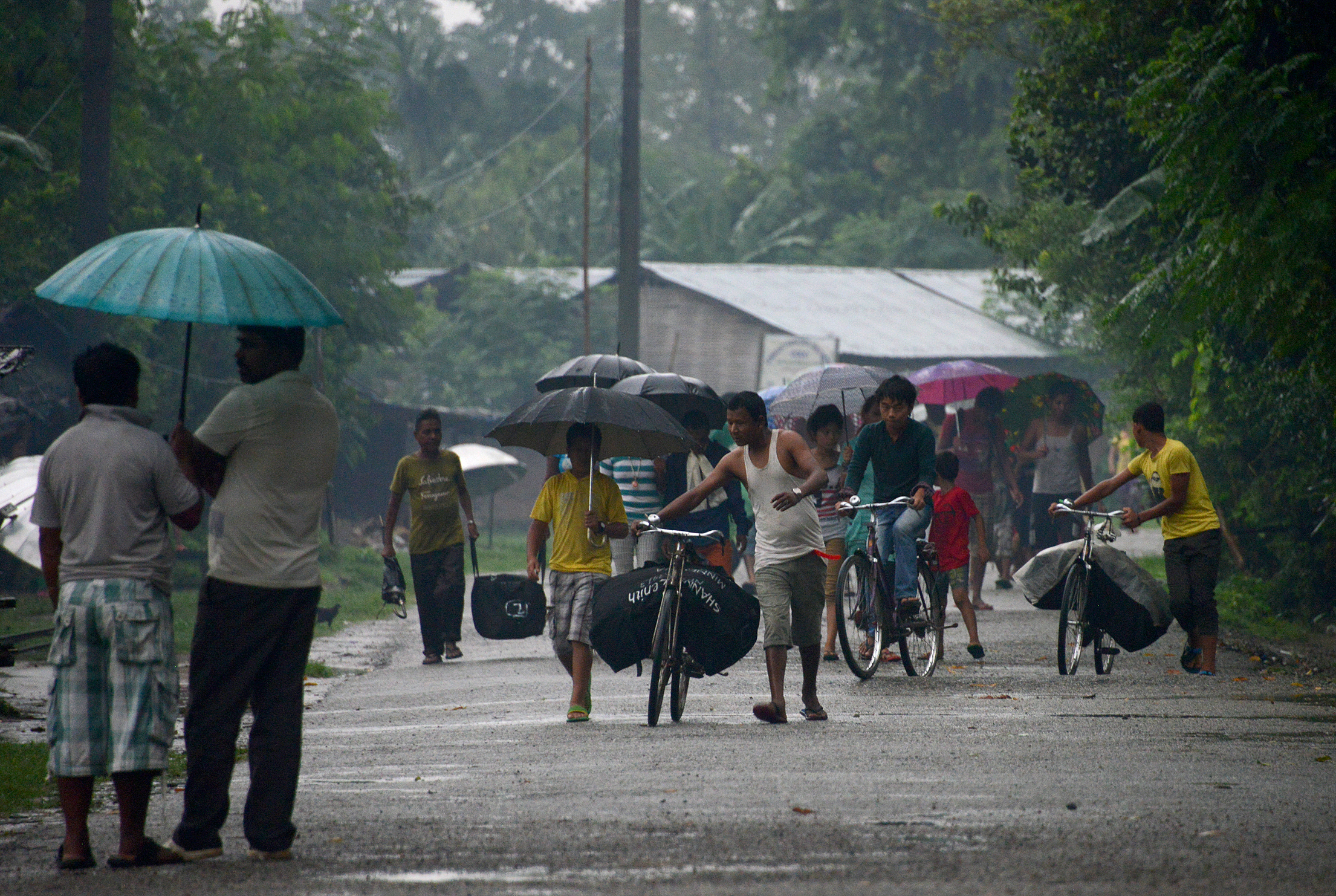
LEAVING
During a monsoon rain in early July, friends, family and neighbors pour out of the Sanischare refugee camp to see loved ones off as they embark on their journey to the United States. Three times a week, buses pull out of the camps full of refugees for the 300-mile trip Kathmandu, then new lives in America.
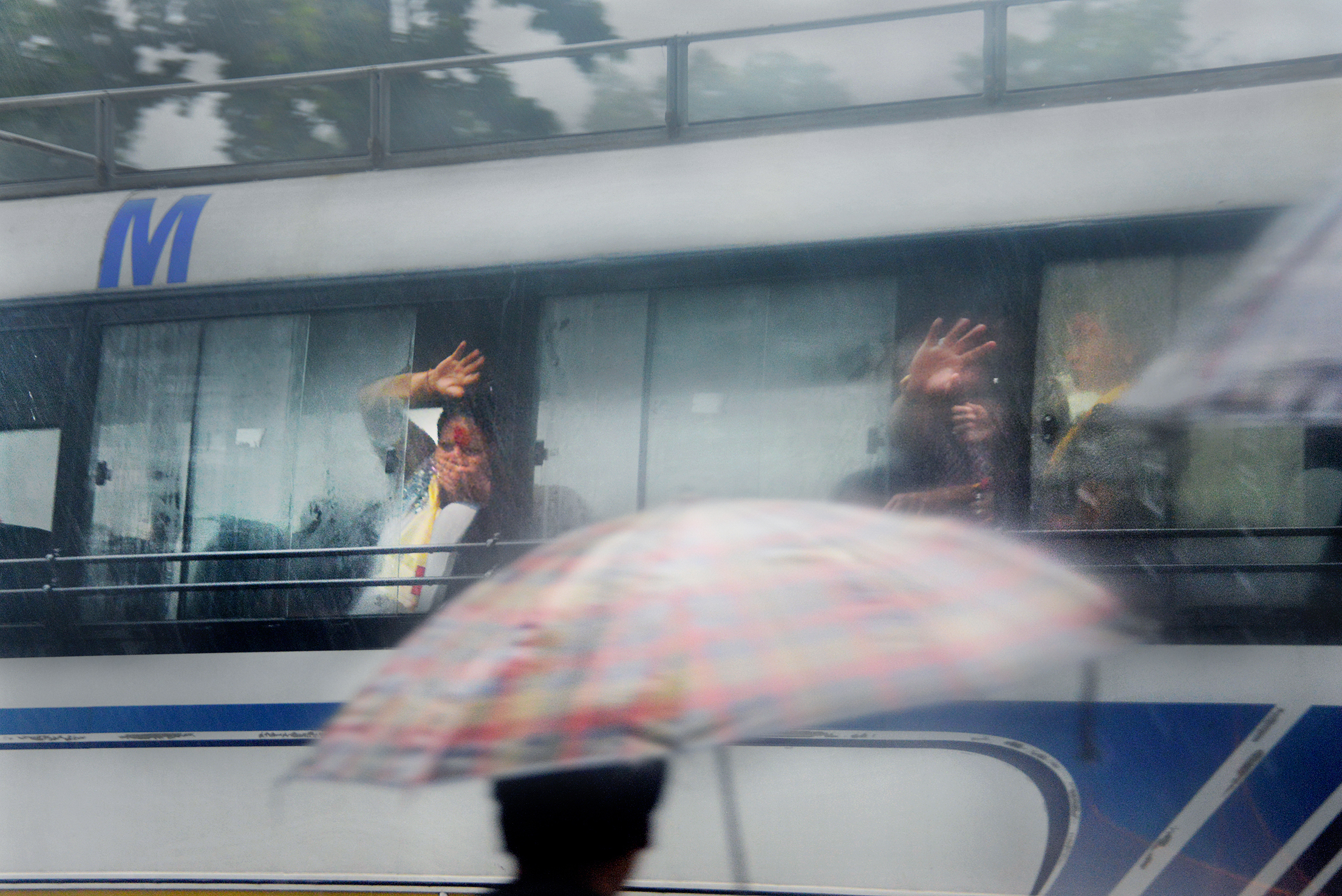
Dambar Kumari Dhungel, 31, (left) waves goodbye to her husband and friends as she pulls out of the Sanischare refugee camp for the last time July 11.
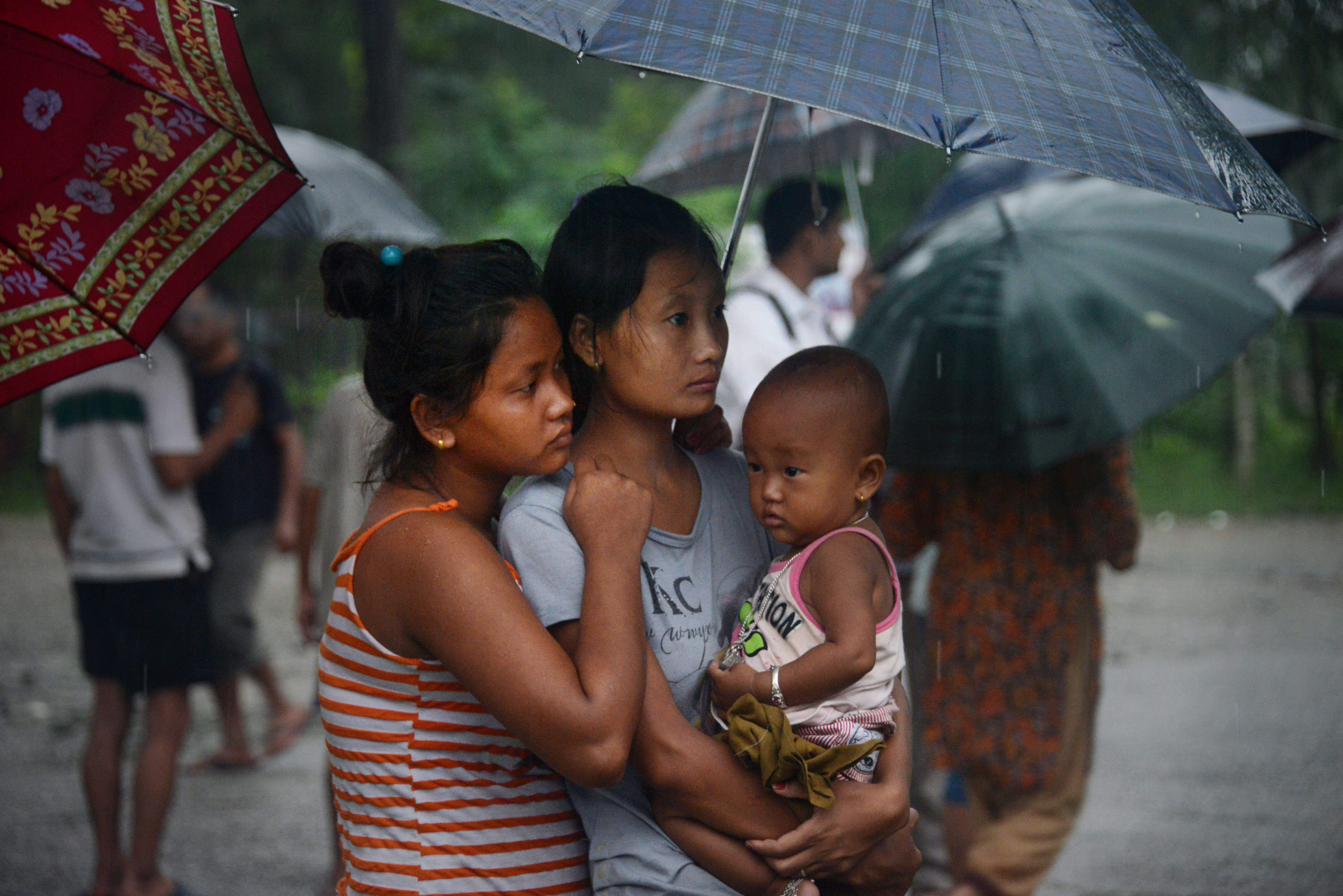
Those not bound for third countries watch as fellow refugees leave the camps for the last time. Many who have yet to resettle say the delay of their own immigration -- coupled with the departure of so many friends, family members and life-long neighbors -- makes them feel depressed and lonely.
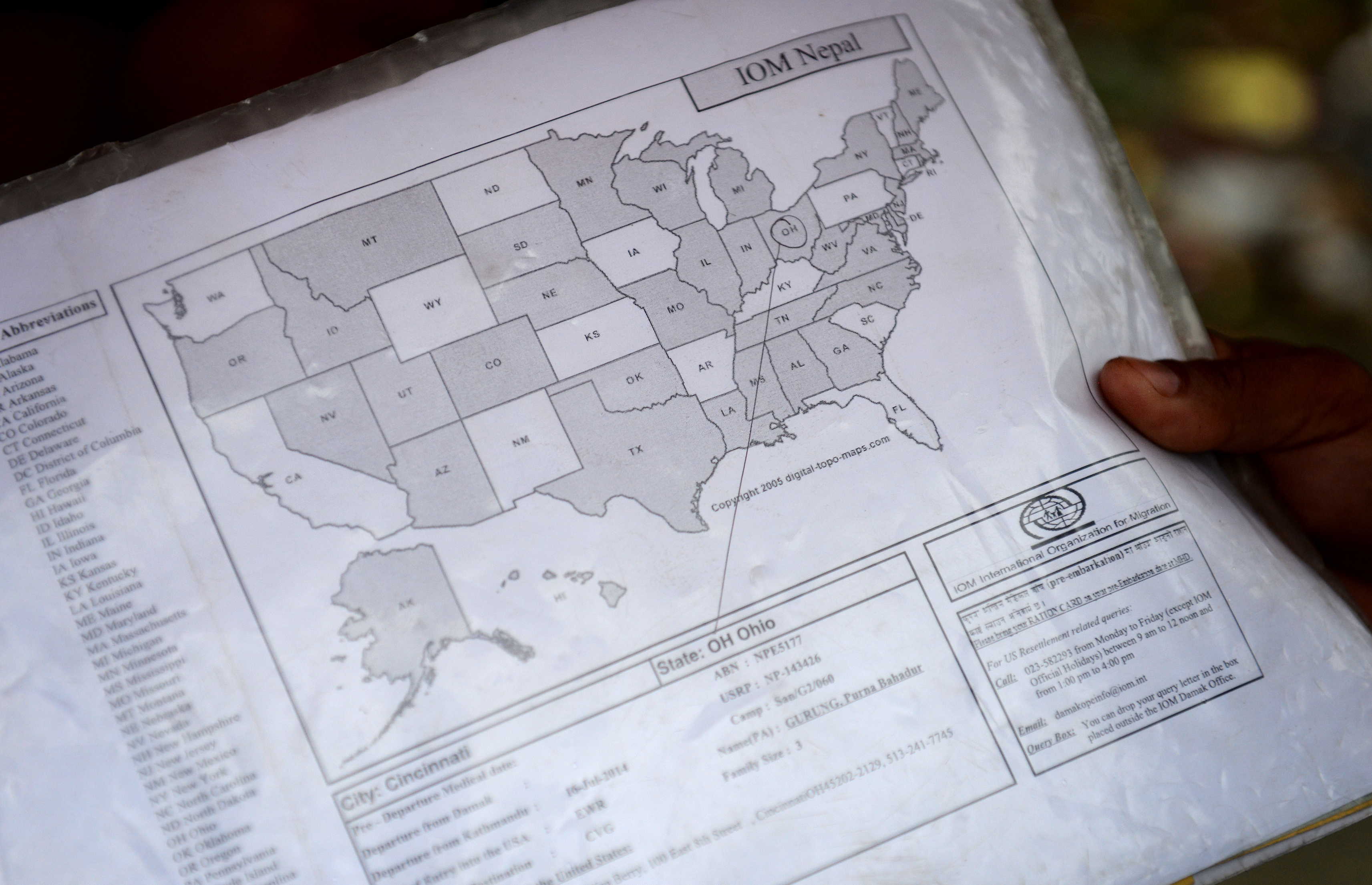
Purna Bahadur Gurung shows an information sheet that the International Organization for Migration gave him to prepare him for his upcoming departure for the United States. He and his family will relocate to Cincinnati.
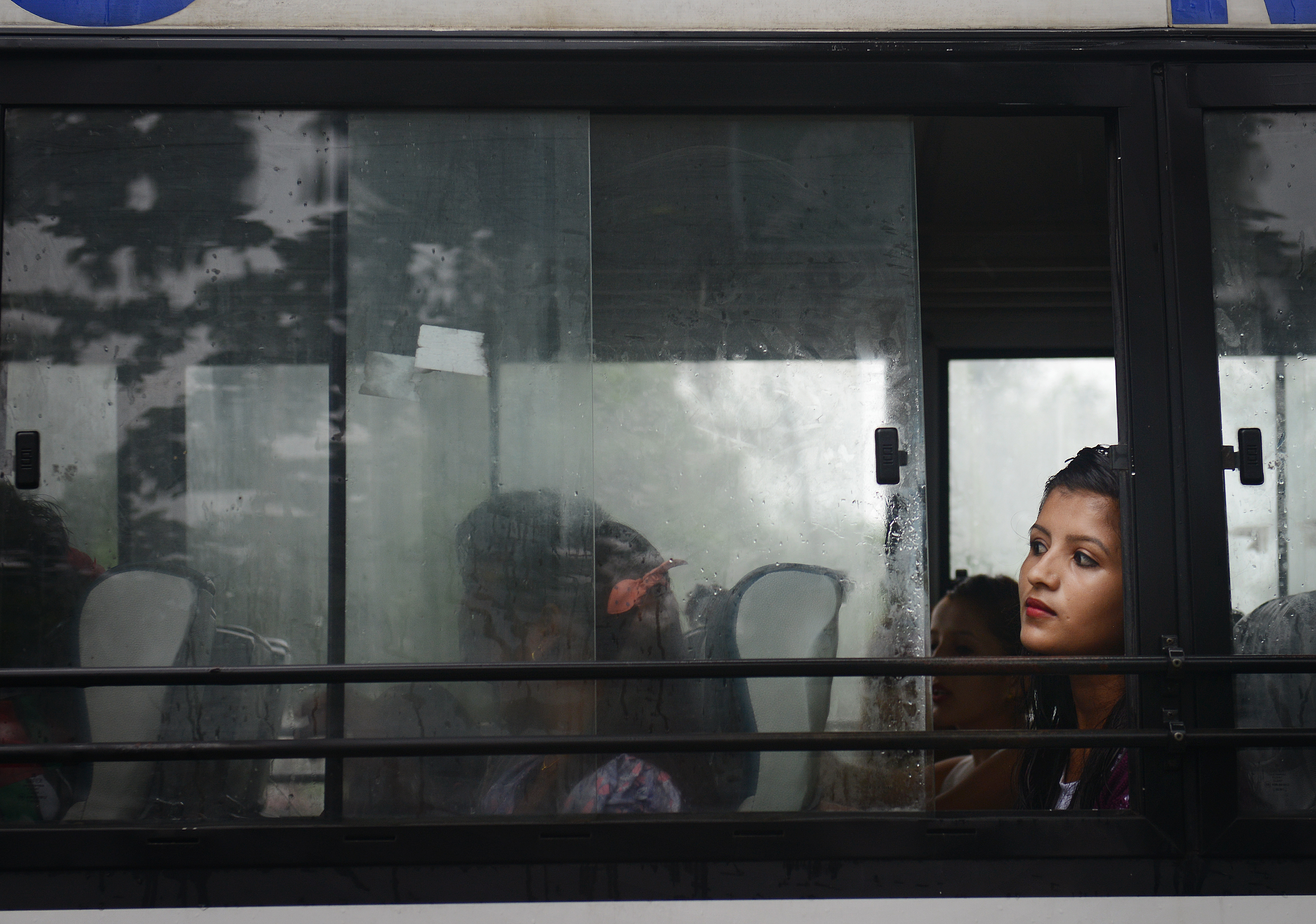
Jyoty Kharel, 16, on a bus to get to her final medical examination -- the last step in the immigration process -- the day before she leaves to travel to Atlanta. To make the trip, Kharel donned stylish skinny pants and red platform shoes, matching the red-stained rice pasted to her forehead — a Hindu tradition that''s meant to bring health and good luck.
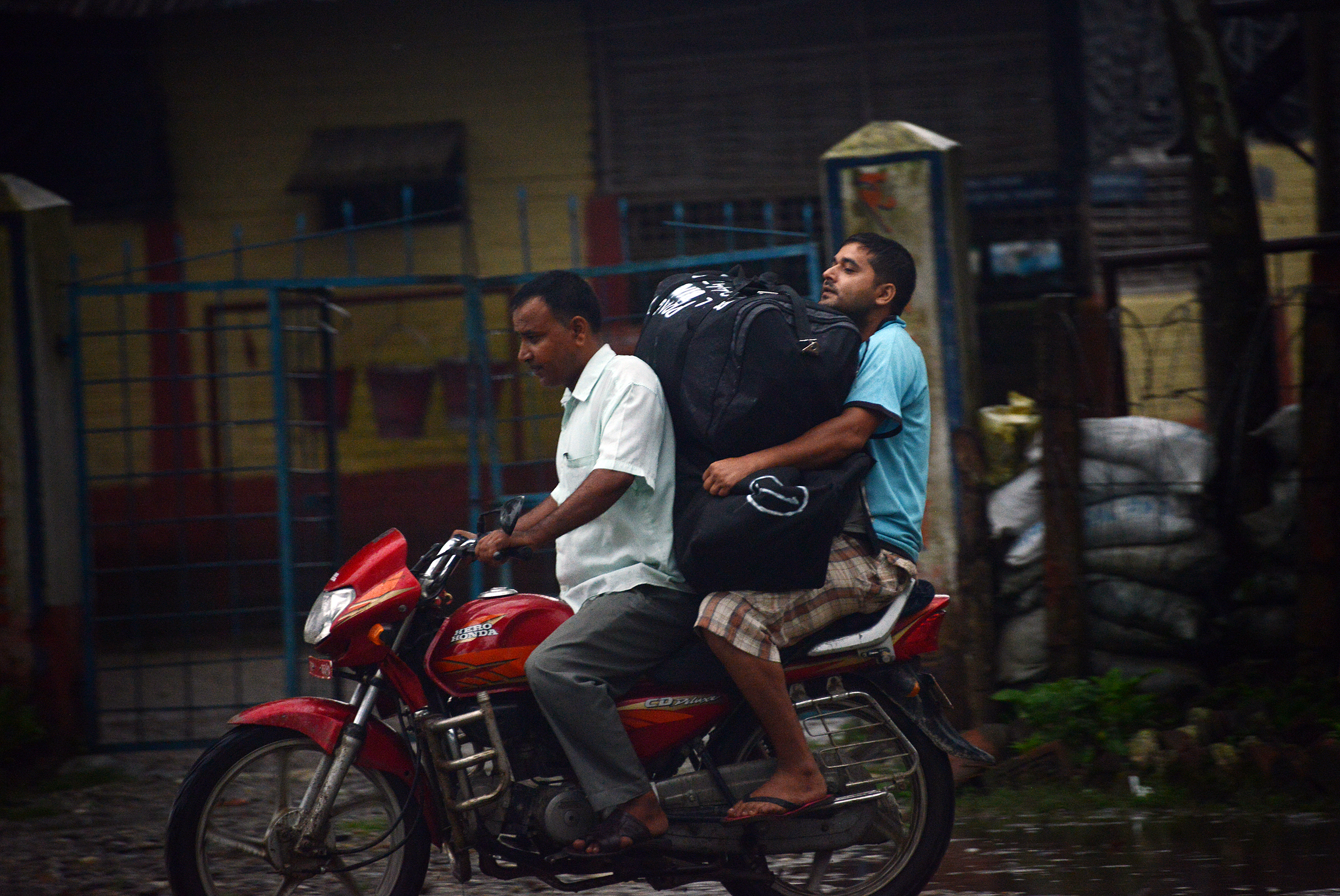
On Wednesday, Thursday and Friday mornings, International Organization for Migration buses painted in stark white roll into the camps to carry away those who have been selected for resettlement. Each refugee is allowed only a few personal possessions for the move around the world. One duffle bag per person is the usual, although some travel with less.
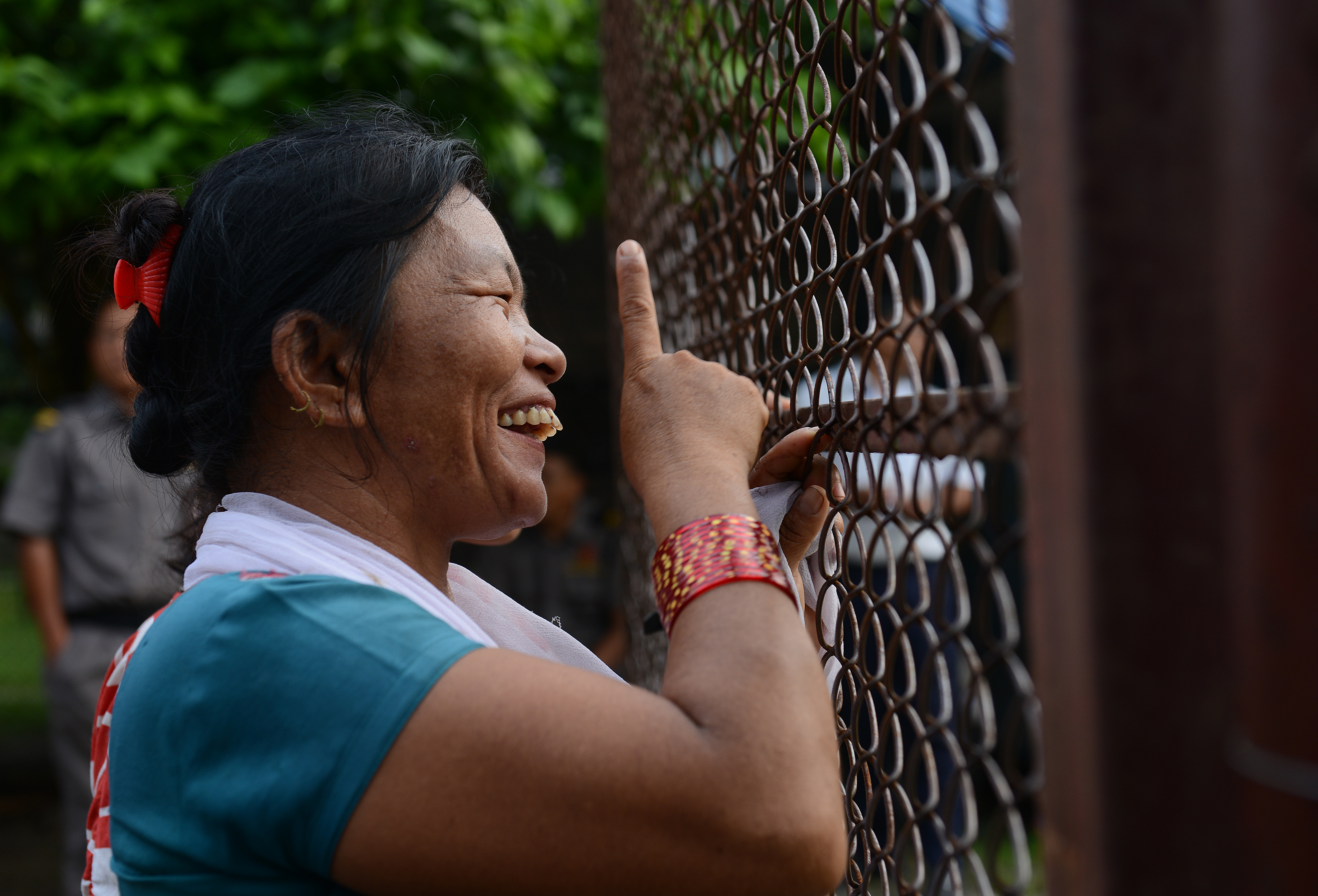
Buddhi Maya Rai waves goodbye to her family as they leave for the United States. Ms. Rai says she was happy to see her family start a new life, though she will miss them.
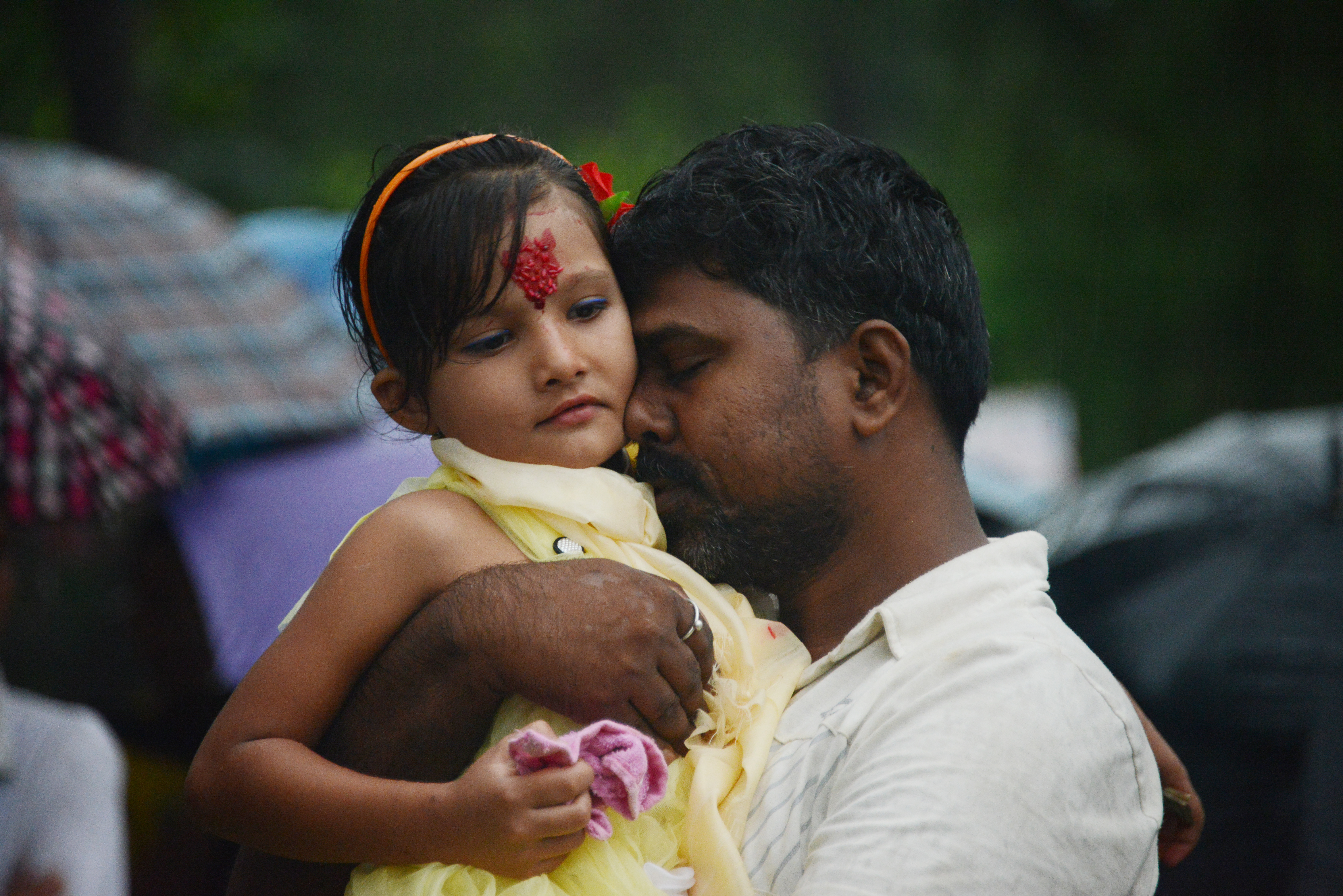
Smile Devan, 33, a Nepali citizen, says his final goodbyes to his daughter, Rina Shah, 7, before she, her brother and mother leave the refugee camp for the United States. Smile does not know when he will see his two children again since he is not eligible to resettle.
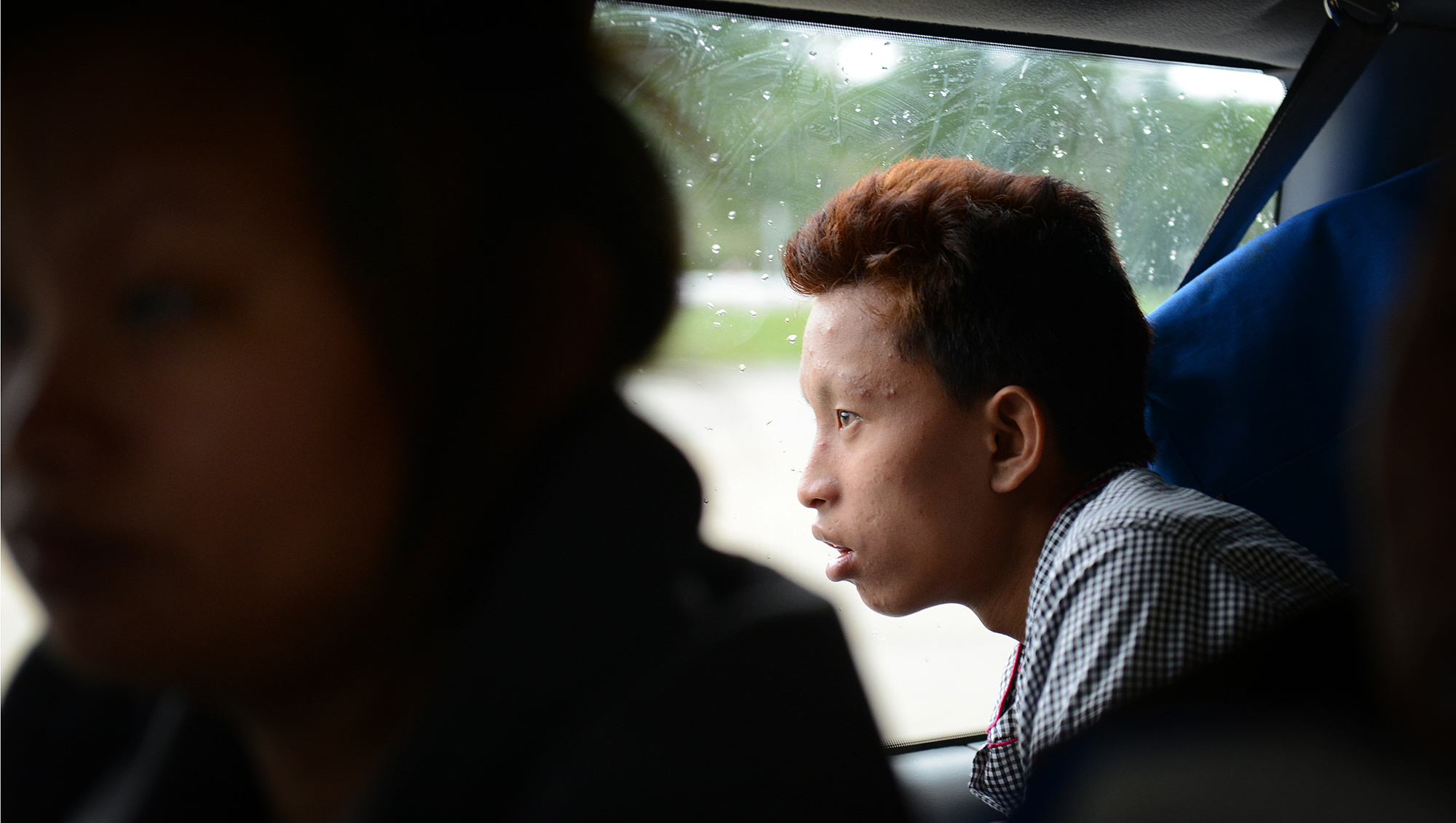
PITTSBURGH
Bikram Gurung17, gets his first glimpse of Pittsburgh through the window of a church van as it pulls away from Pittsburgh International Airport.
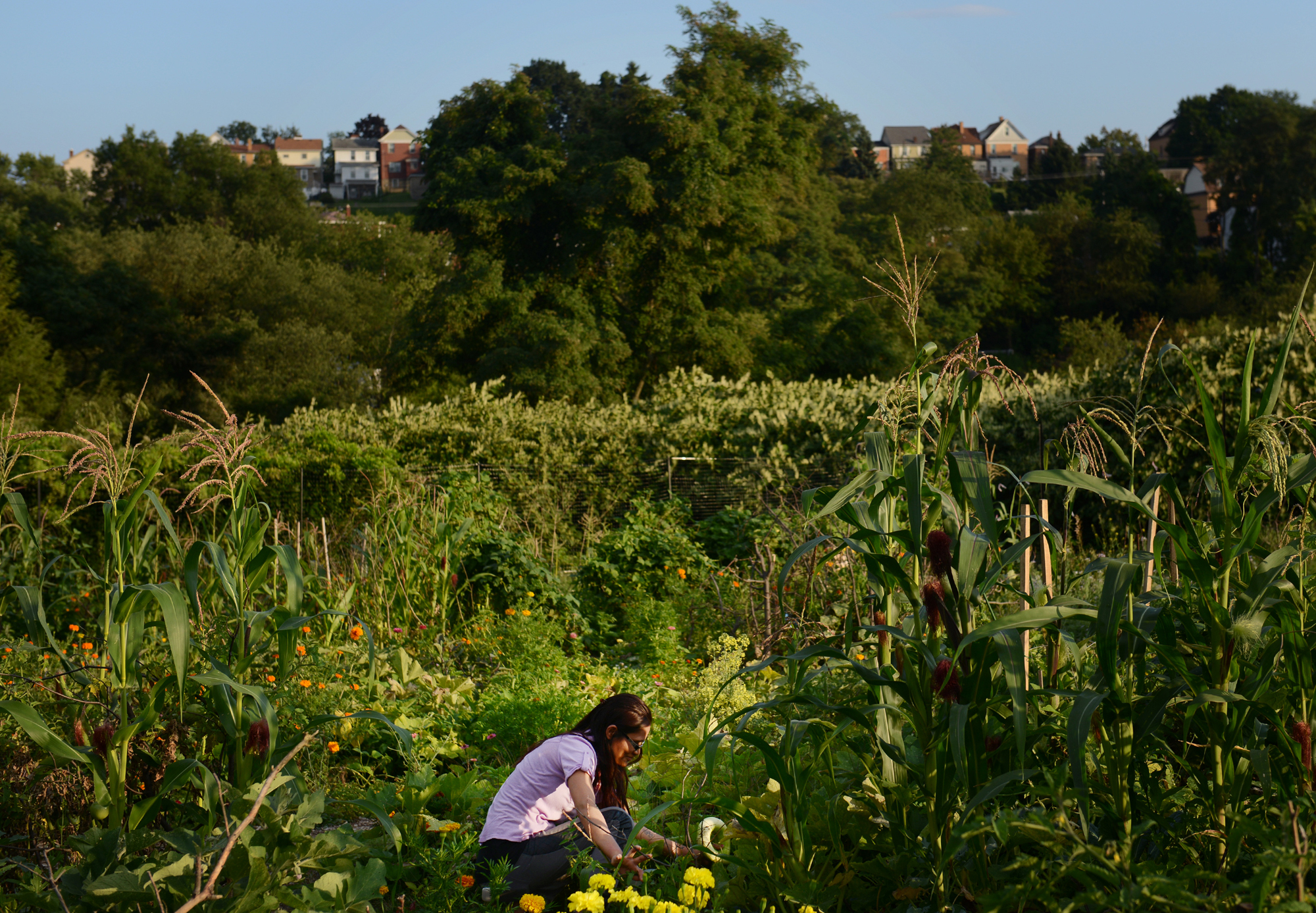
Nir Neopaney, 25, gardens at the Mount Oliver Borough Community Garden. Nir and her husband Krishna Prasia, 27, came to the United States three years ago and moved to Pittsburgh from Erie about 1 1/2 years ago. "We came to Pittsburgh because there are job opportunities," Krishna said. The Bhutanese refugees have dealt with depression and higher than average suicide rates in the camps as well as in the United States.
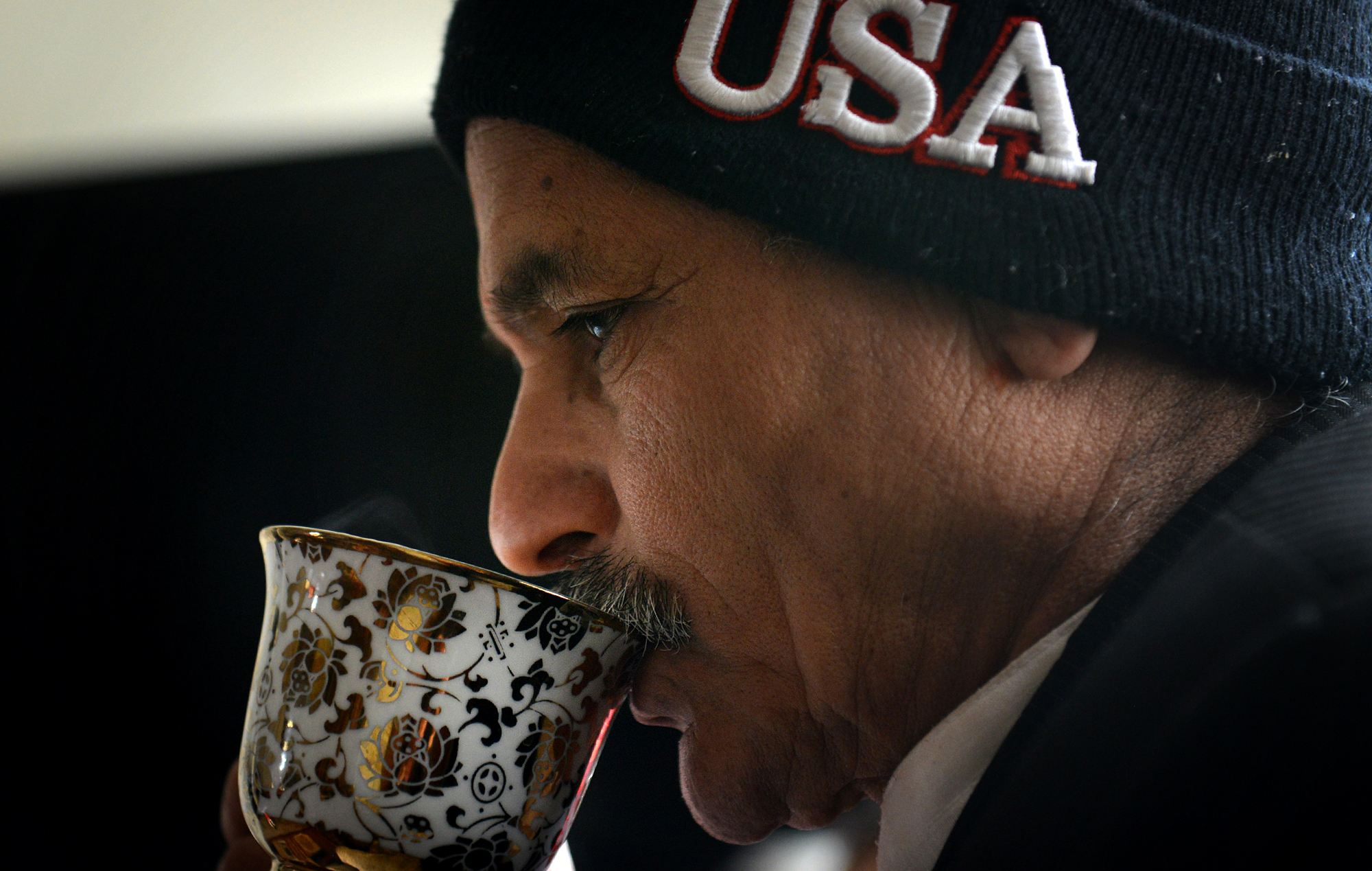
Kawal Poudel drinks traditional Nepali tea at a family home in Carrick. When refugees worry about losing their culture, worry that their children will abandon their language and their strict religious traditions, they are worrying about the fate of an entire culture.

Bhutanese men conduct a traditional marriage ceremony on the third floor of a home in Carrick.
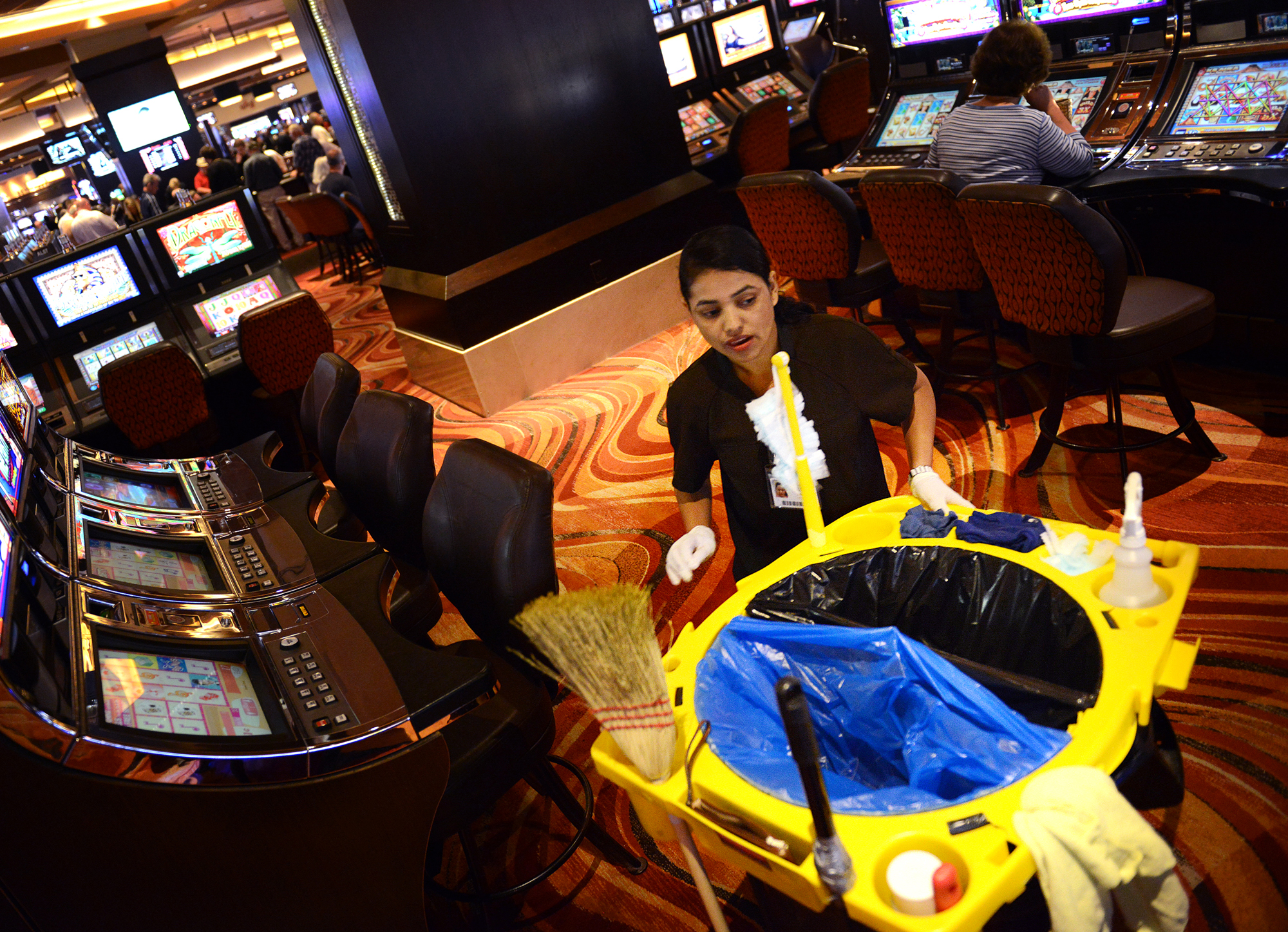
Bhim Maya Poudyel, 30, cleans the nonsmoking section of Rivers Casino.
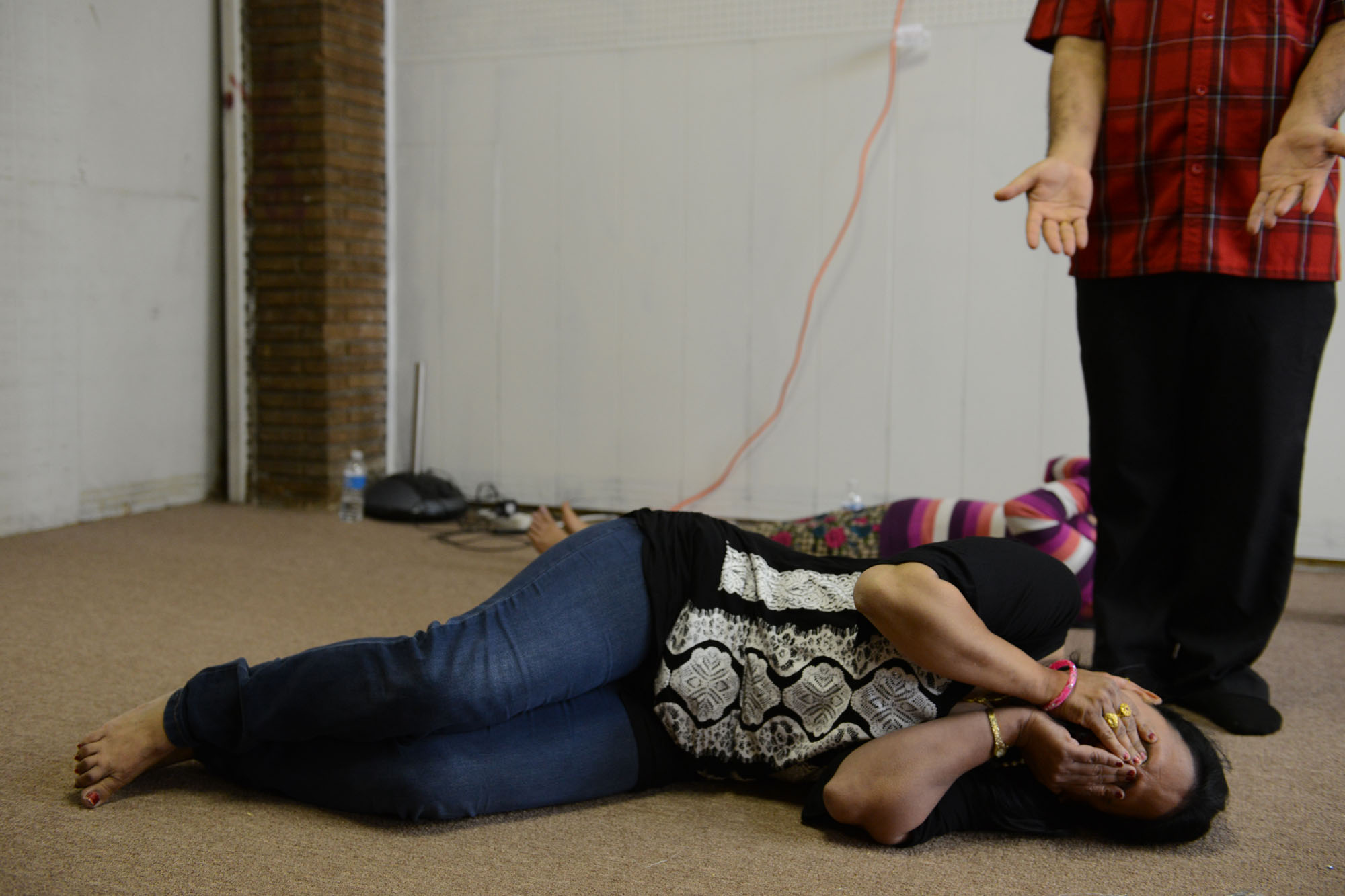
Kala Siwakoti cries as Rup Pokhrel leads Bhutanese refugees in a group therapy session in May at the Gorkhali Store, a Nepalese grocery, in Carrick. Mr. Pokhrel said that Ms. Siwakoti was crying for the family she misses and will never see again in Bhutan. "We can solve problems by crying. Crying is not a problem, we cry even when we are born," he said.